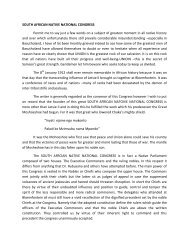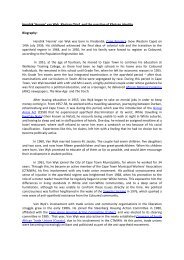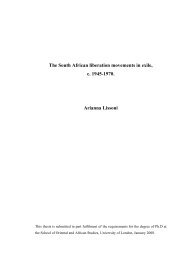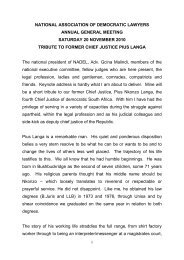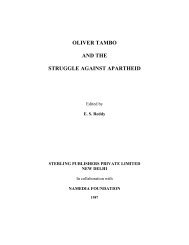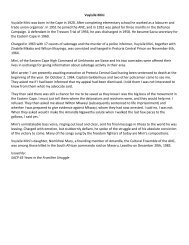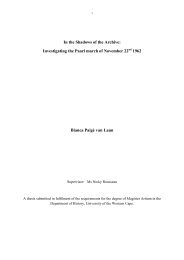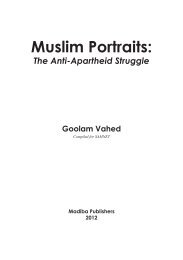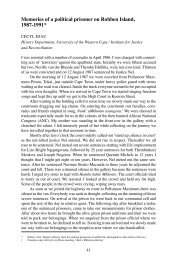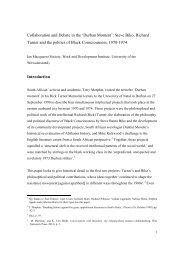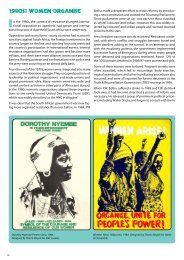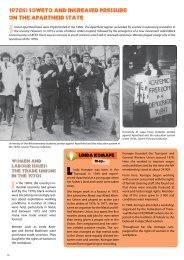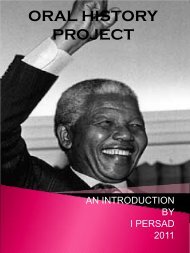Celebrating Women - South African History Online
Celebrating Women - South African History Online
Celebrating Women - South African History Online
Create successful ePaper yourself
Turn your PDF publications into a flip-book with our unique Google optimized e-Paper software.
Towards change<br />
a<br />
fter the 1994 elections, the Truth and Reconciliation<br />
Commission (TRC) was set up. The<br />
Commission investigated what happened during the<br />
Apartheid era from 1960 to 1994. They heard testimonies<br />
from all members of <strong>South</strong> <strong>African</strong> society about<br />
political crimes, violence and human rights abuses that<br />
had not been disclosed. In theory the commission was<br />
empowered to grant amnesty to those charged with<br />
atrocities during Apartheid as long as certain conditions<br />
were met. Statements were heard by more than<br />
20 000 people, including women. 5 392 people were<br />
refused amnesty and 849 were granted amnesty, but<br />
no women applied for amnesty.<br />
On 28 October 1998 the Commission presented its<br />
report to the State President, Nelson Mandela. The report<br />
condemned both sides for committing atrocities.<br />
The TRC was a crucial component of the transition to<br />
full and free democracy in <strong>South</strong> Africa.<br />
In 1996, a new constitution, with provision for women’s<br />
rights, was introduced along with a Commission<br />
for Gender Equality. This marked a turning point for<br />
women in <strong>South</strong> Africa and aided in empowering<br />
women in many ways in the late 1990s.<br />
Classroom activity<br />
Read the following extracts about the Truth and Reconciliation<br />
Commission and then answer the questions below.<br />
Extract 1<br />
“Retributive justice is largely western. The <strong>African</strong> understanding<br />
is far more restorative not so much to punish as to redress<br />
or restore a balance that has been knocked askew. The justice<br />
we hope for is restorative of the dignity of the people.”<br />
- Archbishop Desmond Tutu, during the TRC proceedings<br />
Extract 2<br />
These words were said during the time of the Truth and Reconciliation<br />
Commission by Mrs Cynthia Ngewu whose son,<br />
Christopher Piet was killed by the Security Police in 1986. In<br />
response to the plea of forgiveness from the man who killed<br />
her son, she said:<br />
“This thing called reconciliation ...if I am understanding it correctly<br />
... if it means this perpetrator, this man who has killed<br />
Christopher Piet, if it means he becomes human again, this<br />
man, so that I, so that all of us, get our humanity back ... then<br />
I agree, then I support it all.”<br />
- Source: TRC Report 1998b: 451<br />
Questions:<br />
1. Explain the difference between restorative and retributive<br />
justice.<br />
2. What did Mrs Cynthia Ngewu mean in Extract 2?<br />
3. Do you agree with her sentiments? Explain your answer.<br />
4. Discuss with your class your feelings about restorative<br />
justice and the work of the TRC.<br />
29



